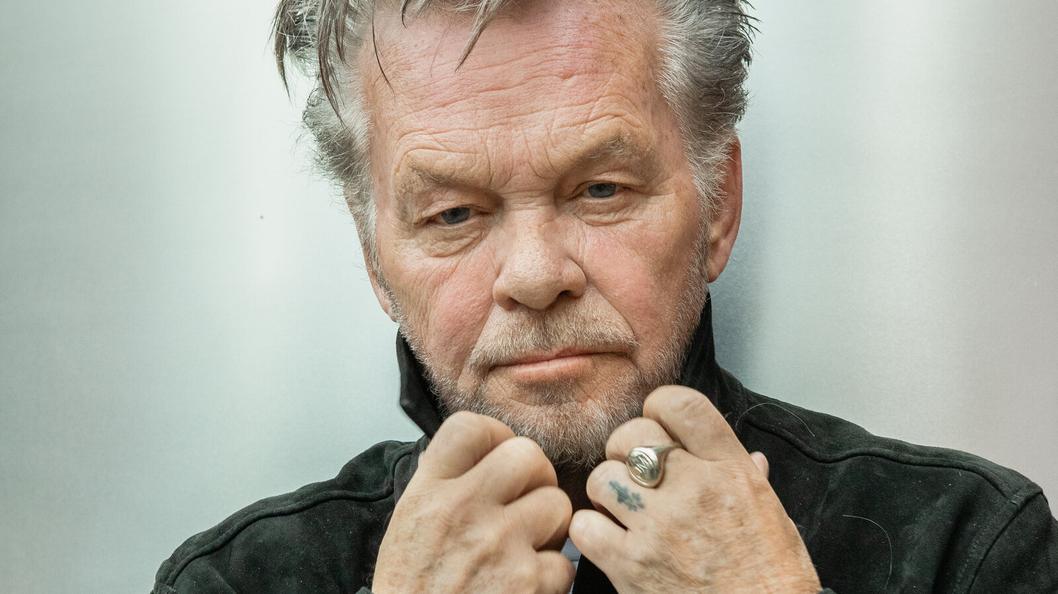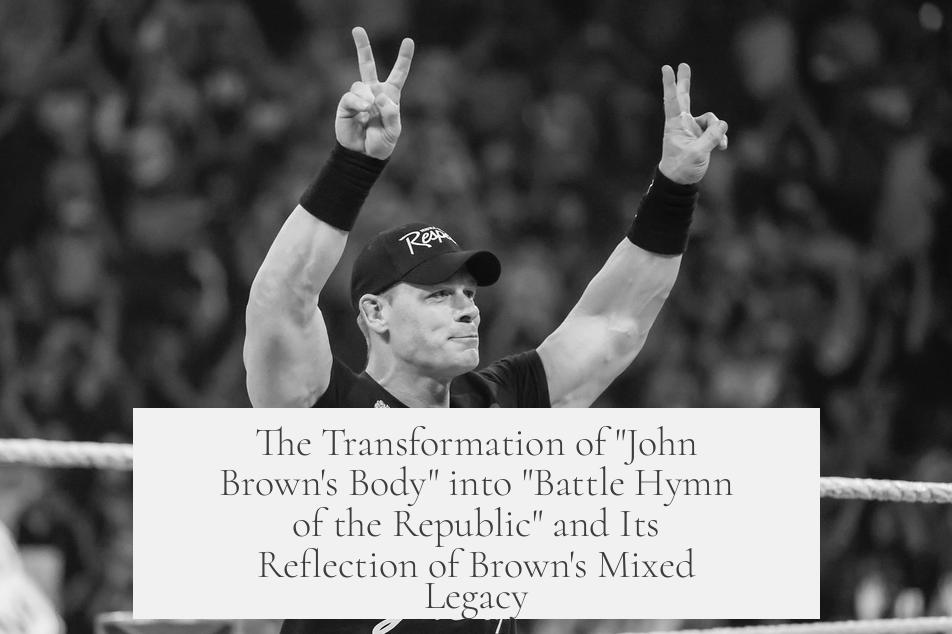“John Brown’s Body” was rewritten to become the “Battle Hymn of the Republic” mainly because John Brown’s mixed reputation made the original song unsuitable for broader, especially upper-class, audiences. The new version, written by Julia Ward Howe, softened the message, removed direct references to Brown, and transformed it into a patriotic hymn fit for parlor singing.
The original “John Brown’s Body” emerged as a popular marching song among Union soldiers during the Civil War. It featured simple, repetitive lyrics set to a well-known melody from the religious tune “Say Brothers Will You Meet Us on Canaan’s Happy Shore.” Its straightforward, martial rhythm made it easy for soldiers to sing while marching or working.
John Brown, a militant abolitionist who led violent raids against pro-slavery forces, was a deeply divisive figure. While many abolitionists admired his dedication, others viewed his violent methods with suspicion. To the Confederacy, he was a traitor. This made the song celebrating him controversial during and after the war. Its rebellious and sometimes coarse tone resonated with soldiers and freed slaves but alienated more conservative listeners.
Julia Ward Howe first encountered the tune during a carriage ride in Washington, D.C., inspired to write new lyrics after a minister criticized the original lyrics for their crude nature. At President Lincoln’s suggestion, Howe composed the “Battle Hymn of the Republic.” This new song retained the stirring melody but replaced the militant, abolitionist message with a more formal, religious, and patriotic theme.
Howe’s “Battle Hymn” emphasized divine providence, national unity, and the moral cause of the war rather than glorifying violent rebellion or praising a contentious individual. The song transformed the original from a simple soldiers’ chant into a refined hymn suitable for upper-class parlors and public ceremonies. The sheet music even avoided mentioning John Brown explicitly, instead calling it “new lyrics for the favorite melody of Glory, Hallelujah.”
The differences between the two songs can be summarized as follows:
| Aspect | “John Brown’s Body” | “Battle Hymn of the Republic” |
|---|---|---|
| Audience | Union soldiers, freed slaves, working-class | Upper-class, officers, and parlor audiences |
| Tone | Coarse, simple, rebellious, militant | Religious, refined, patriotic, solemn |
| Message | Celebrates John Brown’s violent abolitionism | Focuses on providence and preserving the Union |
| References to John Brown | Explicit and central | Removed or indirect |
| Post-war popularity | Popular with veterans and freed slaves | Popular nationally, tied to Lincoln and reconciliation |
During the war, “John Brown’s Body” was more popular with soldiers. The simplicity and directness suited marching and camp life. However, its coarseness and militant tone limited its acceptance among civilians and upper-class audiences. After the war, “Battle Hymn of the Republic” gained wider cultural traction. President Lincoln enjoyed Howe’s version, and performances following his assassination helped cement it as a national anthem of sorts.
The “Battle Hymn” aligned better with the reconciliationist mood that developed after the conflict. Unlike the original, it avoided explicit praise of violent abolitionism or the polarizing figure of John Brown. Instead, it focused on the idea of America as a nation favored by divine providence, fighting to preserve freedom and unity. This broad appeal helped it become embedded in American cultural memory.
Julia Ward Howe’s own account supports this evolution. She wrote the “Battle Hymn” as a response to a perceived need for a dignified, unifying song. The move away from John Brown’s figure helped the song gain acceptance among a wider audience, including women in society parlors and church settings. Thus, the rewriting was as much about class, context, and audience as it was about politics and ideology.
- John Brown’s controversial reputation made the original song unsuitable for polite society.
- Howe’s “Battle Hymn of the Republic” removed direct references to Brown to broaden appeal.
- The original was a coarse, militant soldiers’ song; the rewritten was a refined patriotic hymn.
- The “Battle Hymn” better fit post-war reconciliation and national unity themes.
- Lincoln’s endorsement and the timing after his assassination helped popularize Howe’s version.
Why Was “John Brown’s Body” Rewritten to Become “Battle Hymn of the Republic?” Was It Due to Brown’s Mixed Reputation, Even Among Abolitionists?

Yes, the rewriting of “John Brown’s Body” into the “Battle Hymn of the Republic” reflects both John Brown’s controversial reputation and the desire to reshape the song’s tone and audience. But there’s more to the story than just Brown’s mixed legacy. The transformation mirrors social class divides, shifting political climates, and evolving attitudes toward abolition and patriotism during the Civil War era.
Let’s unpack the reasons why the original marching anthem, “John Brown’s Body,” morphed into the polished, poetic “Battle Hymn of the Republic.” You might expect it’s just about sanitizing a violent hero’s image, but the truth offers a richer, revealing perspective.
From Soldiers’ March to Parlor Song: Two Songs, One Tune

“John Brown’s Body” wasn’t even an original tune! It took its melody from an old religious folk song, Say Brothers Will You Meet Us on Canaan’s Happy Shore. Soldiers loved it because it was simple, easy to learn, and great for marching or working in groups. The song celebrated the militant abolitionist John Brown in a blunt, direct way—calling out his violent actions against slavery and glorifying sacrifice in battle.
However, it was raw and irreverent. George Kimball, an observer of the era, described it as “coarse” and “slightly objectionable” for upper-class sensibilities. Soldiers, freed slaves, and radical abolitionists embraced it. Yet, it didn’t resonate well with the higher social circles or the more delicate ears of the parlor rooms.
This crude edge wasn’t just style; it was tied to Brown’s reputation. John Brown was a polarizing figure. To many, he was a hero of liberation; to others, a reckless insurrectionist. His acts in Bleeding Kansas and the Harpers Ferry raid branded him a traitor in the eyes of some, including certain abolitionists wary of violent tactics.
Julia Ward Howe’s Mission: Refining for Respectability

Enter Julia Ward Howe. At the suggestion of a minister who found the original lyrics wanting, she rewrote the words while traveling near Washington, D.C., at the height of the Civil War. President Lincoln himself reportedly encouraged this shift.
Her goal wasn’t to erase abolitionism, but to refashion the song’s message so it suited a broader audience — notably the socially refined “parlor” crowd, rather than just soldiers. This meant stripping away the explicit praise of John Brown and the raw militancy.
The new “Battle Hymn of the Republic” featured a poetic, religious tone praising the power of Providence and the righteousness of the Union cause. It celebrated the moral fight for freedom but did so with dignity and reverence that might appeal to upper-class ladies and politicians alike.
Notice the subtle but critical pivot: it was less about John Brown the man, and more about what he symbolized—justice, divine will, and national unity.
A Tale of Two Songs: Popularity and Purpose

| John Brown’s Body | Battle Hymn of the Republic |
|---|---|
| Coarse, simple, irreverent | Polished, religious, reflective |
| Popular among soldiers and freed slaves | Favored by officers and upper-class society |
| Militant in abolitionist themes | Patriotic, focused on Union and Providence |
| Directly praised John Brown and violent liberation | Removed John Brown’s name, emphasized unity |
| Dominated Civil War years’ morale | Grew in popularity post-war, especially after Lincoln’s assassination |
During the war, “John Brown’s Body” was the soldiers’ anthem. It was straightforward and easy to belt out en masse as they marched or labored. Meanwhile, “Battle Hymn of the Republic” never quite replaced it on the front line. The former’s raw energy trumped Howe’s somewhat complicated lyrics and measured tone.
However, after the war, things changed dramatically. President Lincoln had named it among his favorites. His assassination launched a wave of performances that elevated the “Battle Hymn” into a solemn symbol of national mourning and reconciliation—its focus on preserving the Union rather than the abolitionist militancy of Brown proved more appealing during Reconstruction.
John Brown’s Divisive Legacy: Hero or Insurgent?

John Brown was a man who embodied moral certainty and violent action. Despite being venerated among many abolitionists and freed slaves, his others were uneasy with his extremism. The government labeled him a traitor, and even among abolitionists, opinions varied. Glorifying Brown in official songs risked offending moderates and alienating allies.
Thus, while no substitute soldier anthem emerged—Kimball notes that other attempts to replace “John Brown’s Body” failed—civil society sought a more inclusive, less controversial tune. The “Battle Hymn” offered exactly this: a patriotic hymn devoid of overt militancy, easy for politicians, clergy, and families to embrace.
Social Classes and Cultural Contexts Shaping the Song

Think about the influence of class and setting. “John Brown’s Body” thrived in rowdy campfires, battlefields, and labor lines. It was a communal shout of defiance and liberation, raw and powerful.
By contrast, “Battle Hymn of the Republic” was crafted for parlors and concert halls, where coarse and irreverent songs might raise eyebrows. Abolitionism was necessary, but it needed to be palatable and respectful to move toward the goal of national healing.
Howe’s lyrics, layered with biblical allusions and lofty language, suited this purpose perfectly. Her version softened the blows of war memories and tugged at the heartstrings of a grieving nation seeking union and hope.
The Takeaway: A Song Reflecting Its Times and Audience

Why bother rewriting “John Brown’s Body” at all? Because songs, like history, evolve to meet the needs of the people singing them. As the Civil War progressed—and ended—the message had to shift from fiery abolitionist cries to broader patriotic unity.
Julia Ward Howe’s “Battle Hymn of the Republic” succeeded because it struck a chord appropriate to the nation’s mood and class divides. It wasn’t about denying John Brown’s role but repackaging that spirit in a form acceptable to the entire country. This made it timeless and entrenched in memory far beyond the war’s grim years.
If you listen closely, these two tunes—sharing the same melody—tell a story about America’s complex journey through abolition, war, class, and healing.
Can a Song Change the Way a Country Remembers?
“John Brown’s Body” and the “Battle Hymn” show how even music reshapes history and memory. Brown’s mixed reputation—even among abolitionists—was a hurdle. Yet, it forced creative minds to find new ways to honor ideals, without alienating half the nation.
Would the Civil War cultural landscape have welcomed a wildly militant anthem in parlor rooms and government halls? Probably not. Howe’s rewriting helped bridge a chasm, combining faith, patriotism, and reconciliation.
So next time you hear the stirring line “Mine eyes have seen the glory of the coming of the Lord,” remember it’s the echo of an old marching tune, refined to fit a divided nation’s hopes for unity and peace.




